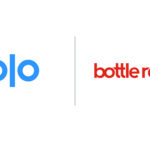Published by
It happens every year. Consumers overflowing with holiday excitement spend more than they anticipate in November and December. They spend not just on gifts, but also on food for family gatherings and clothes for parties. The excitement continues into the first week of January, as gift cards get spent and families enjoy their last days at work. Then, reality sets in. January begins in earnest, and the post-holiday spending slump begins.
This year is no exception.
As retailers head further into the month of January—typically an overlooked month—they’re seeing shoppers returning and exchanging items at a rapid pace. They’re also struggling to clear out excess inventory before closing out the fiscal year and bracing for a tough few months ahead.
“In some sectors, businesses rely on the final quarter of the year for as much as 80% of their annual profits,” says Rajesh Midha, president of Ogilvy Experience and CEO of Bottle Rocket, an experience consultancy that provides business strategy services to brands. “As the busy Christmas season draws to a close and the U.S. economy continues to slow down, retailers are having to work harder than ever to win the wallet share of customers.”
Midha believes that immersive experiences are the key to helping retailers navigate what could be a rocky 2023. He says the best experiences use mobile apps and digital technologies to replicate what it feels like to discover products in brick and mortar stores.
“Whether it’s by leveraging augmented reality or creating great omnichannel customer experiences, businesses will need to make their digital experiences as immersive as possible,” Midha says. “They should be designing relationships with customers that span every possible touch point and offer deep value exchange for customer data.”
Rising Customer Acquisition Costs in 2023
Spencer Kieboom, CEO of Pollen Returns, says higher customer acquisition costs in 2023 are forcing many retailers to get creative with their strategies. Coupled with an economic downturn that’s looming overhead, he expects loyalty programs to play an important role in the way retailers navigate the post-holiday spending slump.
“CAC [customer acquisition cost] is going up, so pulling the most out of the loyal customers already established is key with intentions of word-of-mouth marketing as a byproduct to lower CAC,” Kieboom says. “Impressing customers as they are driven into loyalty or rewards programs [could lead to] massive potential gains.”
Considering the state of the economy and inflation, many retailers felt relief during the 2022 holiday season. U.S. retail sales growth of 6% to 8% was better than anticipated. However, there are signs that trouble is on the horizon. Sales of big ticket items, like jewelry and electronics, have slowed, and data shows consumer credit card balances are rising.
Navigating High Return Rates
Another issue retailers must navigate is returns. Return rates often spike in January, as shoppers return and exchange their Christmas gifts. To mitigate the impact this year, Kieboom says retailers need to consider the interactions they have with customers while they’re making those returns. How that process goes—and the way the customer leaves the experience—will dictate whether the shopper comes back in the future.
“Returns are a big issue and 54% of retailers desire more efficient returns processes and management,” Kieboom says. “Retailers should consider comprehensive returns solutions to reach that objective, especially brands who have increased DTC [direct-to-consumer] as well as retailers who have large wholesale accounts—they are now competing.”
As they navigate the post-holiday period, retailers should consider that consumers exchanging gifts may be visiting their stores for the very first time. That experience becomes their introduction to the retailer, and it influences whether they choose to come back later in the year.
“Retailers should consider the interaction with the customer making the return,” Kieboom says. “There is an opportunity to improve the LTV and if the return is from a gift recipient, driving them into a returning customer.”
Originally published on streetfightmag.com




